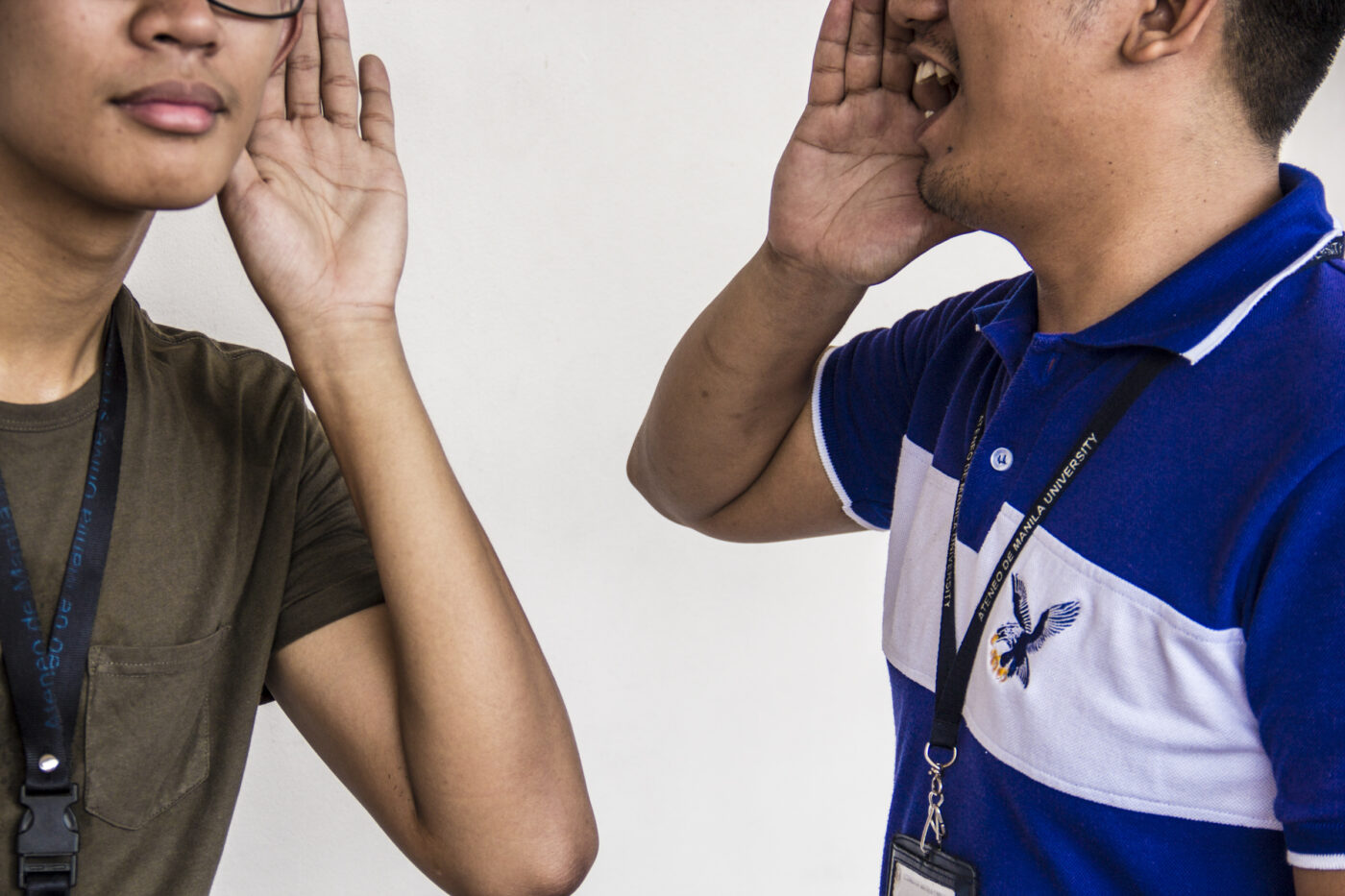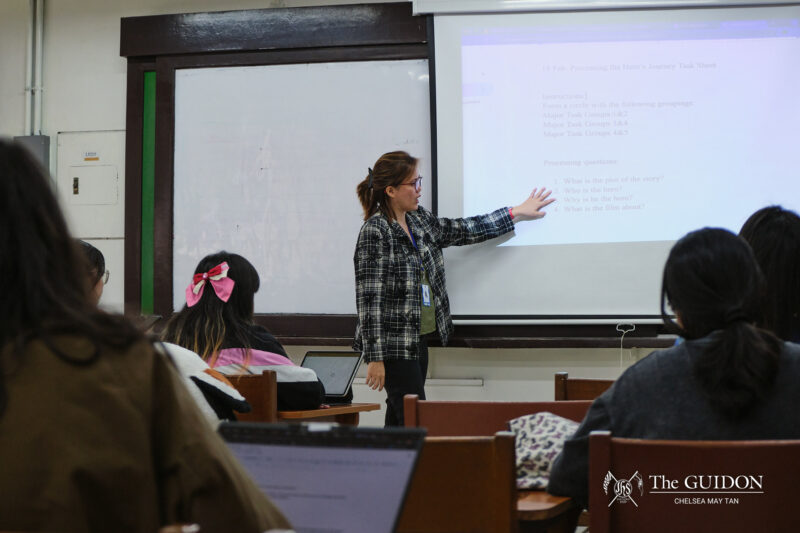On July 5, 2014, the Ateneo Scholarship Fund (ASF) invited Imelda Marcos to deliver the keynote speech at a scholarship fund event marking the 40th anniversary of the foundation. Marcos, whose private donation helped kickstart the ASF, organized a Van Cliburn concert in 1974, yielding proceeds of roughly Php 6 million for the scholarship fund.
Her presence in the event turned out to be a public relations (PR) disaster.
According to a July 2014 article by Rappler, Marcos claimed she was only invited the day before the event, and those who attended were surprised to see her. “Guests clapped, to be polite. But the mood wasn’t altogether jovial. A source who was present at the event said many were surprised to see Mrs. Marcos. Some professors did not bother trying to be polite and sat at the back, away from the cameras and the photo-ops,” the article said.
Images of Ateneo students and high-ranking administrators posing with Marcos circulated like wildfire on social media, drawing outrage from netizens—many of whom Ateneo alumni—who claimed that her presence was an affront to the memory of the Ateneans who gave their lives fighting the dictatorial Marcos regime.
“We couldn’t do much but monitor,” said an administrator from the University Communication and Public Relations Office (UCPRO), who requested anonymity during the interview. “We just waited for the incident to die down because we didn’t want to fan the flames.”
Although this incident occurred over two years ago, it remains instructive in raising questions about the nature of information dissemination in the Ateneo. Were the students who posed for pictures with Marcos bearing the name of the school? What about the Jesuit priests and administrators who invited her to the event?
And how is information disseminated inside and outside the university anyway?
Primary information source
Information dissemination is handled chiefly by the UCPRO, the PR arm of the university. According to its website, the UCPRO is “the information gateway and manager of the Ateneo’s image as a world class, knowledge-based institution.”
As “the primary information source of the University,” the UCPRO is tasked with disseminating information to all units of the Ateneo, whether it be the grade school, the high school, the Loyola Schools (LS), or the professional schools. It handles both external and internal communications for all members of the university community, encompassing not just students, but also alumni, parents, faculty and staff, and prospective students.
The information it disseminates “ranges from simple announcements like suspension of classes to emergency announcements to changes of schedules and other pertinent information,” says Cholo Mallillin, the Director of the Office of Student Services (OSS).
In order to accomplish this, the UCPRO first receives information from the BlueBoard, an inter-office emailing list for university staff and employees handled by the Central Facilities Management Office. From there, the UCPRO distributes the information by publishing it in its online channels.
The UCPRO’s principal platform of information dissemination is the Ateneo de Manila University’s official website, admu.edu.ph, which is where information is first published. From there, the links are shared on the university’s official social networking accounts, including Facebook (FB), Twitter, Instagram, and LinkedIn.
For instance, during the March 28 university-wide bomb threat, the UCPRO published official memos on the university’s website and used its social media accounts to disseminate this information. “Mas malakas ang social networking, and it’s faster,” the UCPRO administrator says, explaining that social media is useful for spreading information as quickly as possible, as necessitated by the danger posed by the situation
Particular subset
Precisely because the UCPRO is in charge of disseminating information to all units of the Ateneo, the information it circulates is mostly of the kind that would be relevant to everyone in the university community, such as the aforementioned bomb threat.
Information that caters only to a particular subset of the university is handled by the particular office in charge of that particular unit. In the case of LS students, information dissemination is managed by the OSS. The OSS makes use of a number of official channels to distribute this information.
These channels are: the Ateneo Infocast service, which is the SMS blast service used by the university; the LS website and FB page; the Ateneo Student Blueboard, which is an FB page managed by the OSS to service LS students by informing them of the latest announcements; email blasts, whether it be to the students’ personal email accounts or their OBF accounts; the Ateneo de Manila University FB page, which is separate and distinct from the LS FB page; and the Department of Public Relations of the Sanggunian.
This is excluding the “traditional” means of information dissemination, such as the memos posted along the bulletin boards in Xavier Hall.
“More student-oriented announcements and important info are posted on social media, where many students are,” says Dasha Uy, the Chairperson of the Department of Public Relations of the Sanggunian. “So some admin groups will have their own pages—the Rizal [Library] Twitter is very popular, but the [Loyola Schools Office of Placement] has its own, and [the Office for Social Concern and Involvement] and [Office of Student Activities].”
According to Uy, the Sanggunian itself is not mandated to release information coming from the administration. But it does have access to the BlueBoard, making it privy to many of the announcements addressed to the university faculty and staff. “A lot of information does come in through us, especially because we, I think, have a particularly large reach,” she says. “So we do, by request, share information and announcements from both admin and orgs.”
In this way, the OSS and the Sanggunian become two of the principal sources of information for LS students—the former representing the administration, and the latter representing the student body.
Whirlwind of information
Given the wide array of information dissemination channels managed by the university, not to mention the numerous media outlets that report news about the Ateneo to the public, a whirlwind of information is made available to LS students. Unfortunately, because of the sheer volume of this information, things can easily get muddled up and confuse students, many of whom do not know where to turn for reliable information.
For instance, during the aforementioned bomb threat, there was plenty of misinformation being spread, some of which reached the UCPRO. “There was this information coming to us that the bags would not be allowed to leave because the bomber was still inside campus. That’s not true, that’s [standard operating procedure],” the UCPRO administrator said. “So we used personal messages and asked people to stop spreading things like that.”
In order to avoid confusion, Mallillin stresses the need to pay attention to official channels. He cites the example of politicians issuing announcements regarding the cancellation of classes, which invariably spreads among students on social media. “That is not official until the school says so—until it comes out as a direct advisory from the Vice President’s Office,” he says.
“A lot of students may be under the impression that media outlets are official channels for school-related announcements. They’re not,” he says. “The media outlets come to us for the official stand of the school.”
He says that even student channels may not necessarily be foolproof, stating that the Sanggunian has disseminated information in the past that is out of step with the administration.
As such, he cites the Ateneo Student Blueboard, in particular, as a platform that students should turn to for reliable information. “If you’re on it, and you PM us a message, we answer in less than 15 minutes,” he says. “It’s very interactive, it responds to the students’ needs for immediate information, and the information there is always official.”
On the whole, Mallillin emphasizes that the best way to navigate the deluge of information being poured upon LS students, particularly when these disparate accounts lead to conflicting information, is to turn exclusively to official channels used by the administration.
A better way
“People say there could be a better way of disseminating information,” Mallillin says. Among the initiatives being studied by the administration is upgrading the bulletin boards into LED’s “to make it more attractive for people to watch and see,” he says. “But that will take a while, because the school needs resources for that. Not just money, but even the infrastructure.”
The school is also looking into the possibility of making the Ateneo Student Blueboard an app to “make information available at [students’] fingertips,” he says. In doing so, students will have an instant, reliable, and centralized portal for immediately accessing official announcements from the school from their mobile phones.
For its part, the UCPRO is focused on redesigning the university website to make it more visually appealing, and to make the information there more relevant to its visitors. “Last November 2015, we had an audit done of the website. Based on Google Analytics, the most important things [for visitors] were the admissions page and course information. So the website was modified to focus on that.”
In addition, the UCPRO is looking to hold seminars for its communications officers on “digital speak”—teaching them how to be more social media savvy—so they can better reach out to people in the digital age.
Uy appreciates the administration’s efforts to use social media and other online tools to reach out to students, saying that it “works quite effectively to an extent.” However, she says that students, contrary to the administration’s suppositions, have actually been clamoring for more offline means of information dissemination. “I have received some feedback that students would like a more physical presence on campus,” she says. “As of now, the team is still thinking of a good method to do that.”
As it stands, information dissemination in the university has plenty of room for improvement. All these efforts collectively seek to provide a faster, more efficient, and overall “better way” of giving students access to the information they need to know. In doing so, the school hopes to avoid the misinformation issues that have plagued it in the past, and create a student body that is more responsive, more aware, and better informed.







